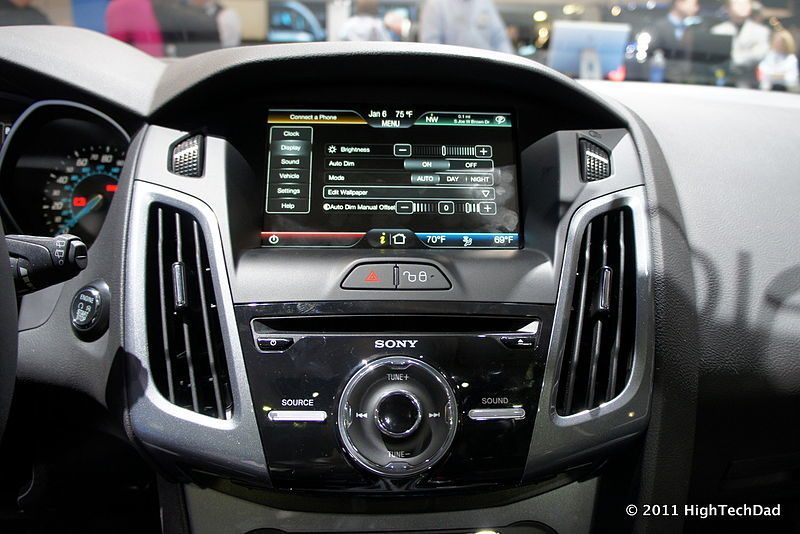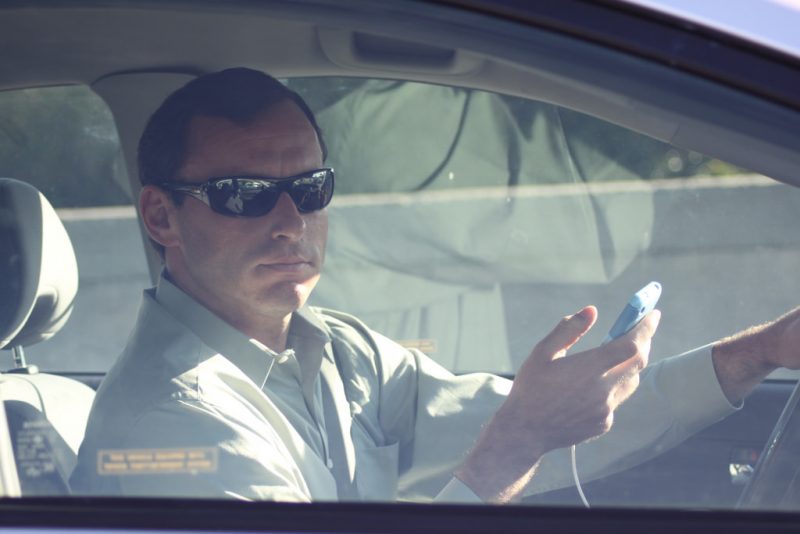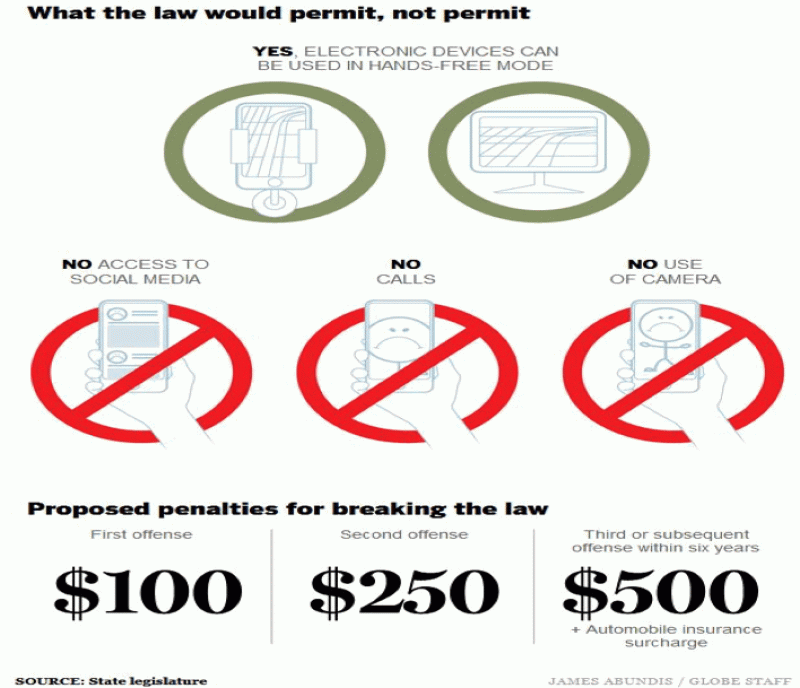In 2015, distracted drivers caused 394,477 motor vehicle crashes resulting in injuries, including 3,477 deaths. In Massachusetts, 21% of fatal crashes in 2015 were caused by distracted drivers.
What is distracting our drivers? Technology

Photo by Benjamin Kraft, CC-BY-SA 2.0
There are three main types of distraction, per the CDC:
- Visual – taking your eyes off the road
- Manual – taking your hands off the wheel
- Cognitive – taking your mind off driving
Smartphones and cars’ built-in “infotainment” systems cause all three, for dangerously long periods of time. Just reading a text takes about five seconds, which doesn’t sound like much. But at highway speed, that’s the length of a football field.
Photo by Benjamin Kraft, CC-BY-SA 2.0A recent study by the AAA Foundation for Traffic Safety found that among the tasks of calling/dialing, texting, turning the radio, and programming navigation, the most demanding tasks were programming navigation and texting.
Drivers who look away from the road for two seconds double their chance of being in an accident. It takes up to 40 seconds to enter navigation destinations or send a text.
Text messaging while driving makes you 23x more likely to crash
Infotainment systems are getting more complex, not less
So-called “infotainment” systems have become more and more powerful in the past decade. Features include navigation, music and radio, calling and texting, weather, gas prices, and even reading Twitter and Facebook. Some include email, schedules and appointments, and address books, synced with a phone. Not to mention apps such as Yelp, OpenTable, and MovieTickets.com.

Photo by Michael Sheehan, CC-BY-SA 2.0
But in most cars, they’re not getting easier to use. There are some standout systems with very carefully thought out interfaces, such as Fiat-Chrysler’s Uconnect 8.4, Hyundai Blue Link, and BMW iDrive. But too many systems are complex, require careful attention and finding buttons on touch-screens. Nor is the price of the car a safe guide; Lexus and Cadillac have some of the least-satisified infotainment customers around, according to Consumer Reports.
Consumer Reports related that luxury vehicles now contain the most distracting infotainment systems, and that base models have far less distracting systems. In an attempt to prevent drivers from using these systems while driving, some companies have made infotainment systems that lock access to some features while the car is motion. But most drivers carry a smartphone and can easily access the same features on their phones.
Texting is just the start
Texting while driving has become a cultural norm, and has been for years. An entire episode on the first season of House of Cards was built on a texting-while-driving death.
77% of young adults believe they can safely text while driving, yet teens who text spend 10% of their time outside their lane of travel. It’s not just a teen problem; 48% of teens have been in a car while the adult driver was texting.
Drivers are using their phones during
88 percent of trips
A study conducted by psychologists at the University of Utah concluded that “impairments associated with using a cell phone while driving can be as profound as those associated with driving while drunk.”
Texting gets the most attention, but nearly any interactive use of the phone causes distraction. From entering a new destination into Waze to sending an emoji in iMessage or a SnapChat, if you are touching the phone, you’re distracted.

Photo by Lord-Jim, CC-BY-SA 2.0
Phone makers are starting to take some responsibility for this. Apple’s latest iPhone software, iOS 11, detects when you are driving and automatically goes into “car mode” and refuses to respond other than to spoken commands. It’s a start, but it’s not enough. Even Apple CarPlay and Android Auto both just move the distraction from the handset to the dashboard.
What is Massachusetts doing?
On June 29, 2017, the Senate passed a “hands-free” bill, which will require drivers to keep their hands off their cellphone while driving and to use hands-free technology, such as a Bluetooth, to make and receive phone calls. The bill bars the use of handheld cellphones to make phone calls, text, use social media apps, make video calls, and program GPS or map apps destinations while the vehicle is in motion.
Drivers will be subject to a citation if they are found with a cellphone near their heads or on their laps. This bill serves as a bolster to the 2010 no texting law, which has been hard to enforce, since it allows drivers to use their cellphones to make phone calls. There is no way to determine if the driver was dialing a phone number or actually texting by the time they are stopped by a police officer. The Insurance Institute for Highway Safety reports that 14 states, including Connecticut, Vermont, New Hampshire, and New York, have already passed hands-free laws.

Get expert advice
SUGARMAN’s personal injury attorneys have extensive experience in representing victims of almost every kind of vehicle accident imaginable. See SUGARMAN’s substantial recoveries for victims of motor vehicle accidents: Car, Motor Vehicle and Motorcycle Accidents.
If you have been hurt in a motor vehicle accident and wish to speak to one of our attorneys regarding liability, please fill out a Contact Form, call us at 617-542-1000 or e-mail .
